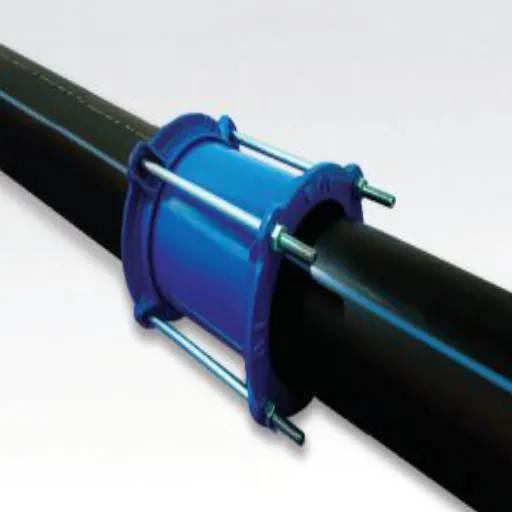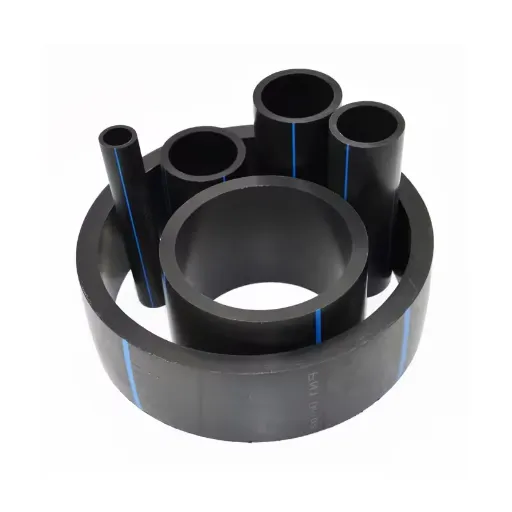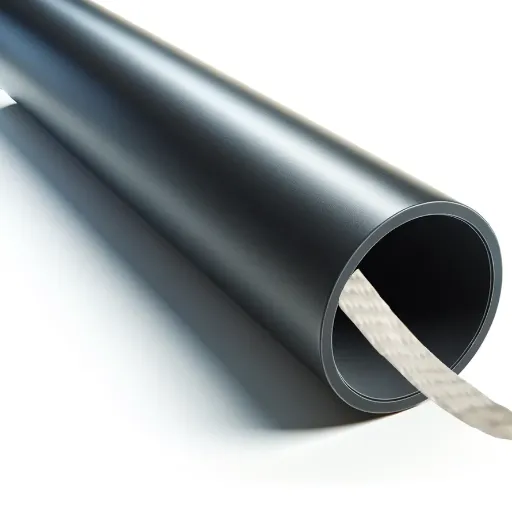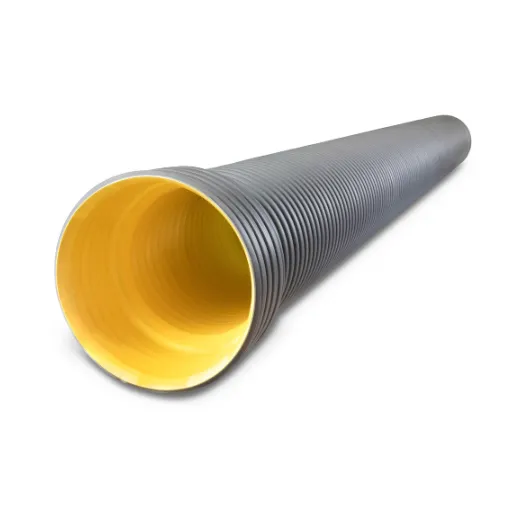In plumbing, construction, or industrial applications, connecting various materials is often the problem to be solved. One typical case is to fuse HDPE pipes—high-density polyethylene— with steel pipes, and that is a task that demands extensive planning and employing the right techniques so that a strong and dependable connection can be achieved. This article is purposed for professionals and amateurs to get the appropriate understanding of the methods and the best practices for accomplishing the connection. If you are replacing an old system or setting up a new one, then the text will guide you through the important factors, practical solutions, and expert suggestions that will make the process smooth and fast. Learn, by reading this article, how to confidently connect these two materials.
Understanding HDPE Pipes
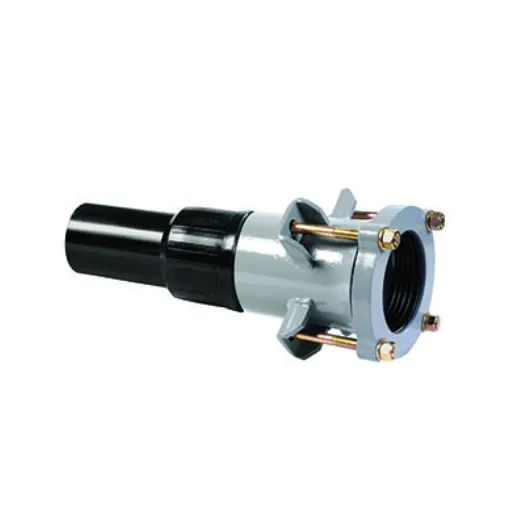
Properties of HDPE Pipe
High-Density Polyethylene (HDPE) pipes are characterized by the almost same durability, flexibility, and practically complete resistance to corrosion and chemical damage. HDPE pipes are made from a thermoplastic material; hence, the pipes’ weight is low but their strength is high, which makes them suitable for a wide variety of applications, among which are water distribution, gas transportation, and processing. Among the various features that characterize the material, the one that stands out the most is the capacity of HDPE to endure the highest stress and pressure without fracturing and therefore reliability even in the most demanding environments is ensured.
The extremely long life of HDPE pipes is one of the standout attributes of the material. The pipes are expected to remain functional for 50-100 years, which is the range depending on the circumstances of installation and operation. Furthermore, the great resistance of HDPE to chemical degradation allows safe transport of harsh fluids. In addition, its smooth inner surface lowers friction, thereby enhancing flow efficiency and also eliminating the possibility of buildup or blockage over an extended period.
The flexibility of HDPE pipes is another major benefit. They can deform as much as required without losing their integrity making them a good option for installation in struggles with uneven or fluctuating grounds. The fusion welding technique which is used for joining the HDPE pipes ensures that the joints are leak-proof, thereby lowering the likelihood of environmental contamination or loss of water. These features along with their versatility and cost-effectiveness make HDPE pipes a trendy choice for modern infrastructure and utility systems.
Applications of HDPE in Industry
HDPE (High-Density Polyethylene) has emerged as a cornerstone material in various industries thanks to its toughness, elasticity, and affordability. Here are five primary uses of HDPE across different fields:
Water and Sewage Systems
HDPE pipes mainly come into the picture when it is a matter of a municipality or an industry water application. The same traits of resistance to corrosion and the capacity to endure high pressure, make the pipes perfectly fit for water treatment and for transport of waste with no risk. One example is a research that says HDPE pipes can be in systems for more than 50 years, so the costs related to their maintenance and replacement would be reduced.
Agricultural Irrigation
Irrigation in the agricultural sector is heavily dependent on the usage of HDPE pipes as they have the properties of being efficient and reliable. The pipes resist exposure to chemicals and UV, which is why they are most suitable outdoors—both in fields and greenhouses. HDPE not only enables but also optimizes water usage thereby helping the farmers save resources and at the same time increasing the yield of crops.
Gas Distribution
HDPE pipes can resist virtually all crack and leak failures which is exactly why they are preferred for the gas distribution networks in the case of natural gas. Their flexibility allows for hassle-free installation in both urban and rural locations. According to industry statistics, around 90% of new gas distribution piping systems now use polyethylene materials that are mainly HDPE.
Chemical and Industrial Processing
HDPE’s property of Being resistant to chemicals is industrial use as chemical storage tanks, liners, piping systems, etc. besides that, its lightweight nature is a plus when it comes to ease of transportation and installation thus cost savings in case of industrial projects.
Telecommunications and Cable Protection
HDPE it is not just in the telecommunication area but also in protection against fiber optic and communication (e.g., HDPE conduits) that are alike and widely employed for the purpose. Along with protection against moisture, physical damage, and environmental stress, the trend of rapid global expansion of telecommunications infrastructure has further increased the demand for HDPE as a reliable material for cable management.
All of these applications are proofs of the range of qualities that HDPE has, it also implies that the role of the material as an industrial part has been further strengthened in the case of modern infrastructure.
Benefits of Using HDPE Pipes
- ✓ Durability and Longevity
HDPE pipes are highly durable and corrosion resistant. Depending on the conditions of usage, they can serve 50 to 100 years. Resistant to chemicals and environmental stress, HDPE pipes find their use in various sectors, from industrial to municipal. - ✓ Lightweight and Easy Installation
HDPE pipes are light compared to traditional materials like concrete and metal, thus lessening transportation and installation costs. Their easy handling also means no heavy equipment is needed for pipes installation, so time and labor costs are saved. - ✓ Flexibility and High Impact Resistance
The versatility of HDPE pipes allows them to bend without breaking. Thus, they can be used in rough terrains or places with earthquakes. On the other hand, this characteristic helps control breakage risks and expenses related to pipe failures. - ✓ Leak-Free Joints
To make joints, HDPE pipes employ heat fusion, which results in seamless, leak-free joints. This effectively reduces water loss during transport and is the reason why HDPE pipes are preferred for water supply and irrigation systems where water efficiency is critical. - ✓ Eco-Friendliness and Sustainability
HDPE piping is eco-friendly since it can be recycled and has a lower carbon footprint vis-a-vis other piping materials. The pipes’ durability adds to the eco-friendliness aspect as it leads to fewer replacements over time and thus saving resources.
Indubitably, these benefits are why HDPE pipes are more and more considered in various sectors for the economical and durable solution.
Common Methods for Joining HDPE Pipes to Steel Pipes
Flange Connection Overview
Flange connections are known to be one of the most dependable and commonly adopted methods for the joining of HDPE and steel pipes. A flange of a fitting connected to the HDPE pipe means that it is bolted to the opposite steel flange on the steel pipe. The flange connection is providing a joint of strong hold, leak-proof quality that can be easily opened and closed for maintenance or modification of the system freely as required.
To make the connection even more secure, a gasket is frequently used which is placed between the flanges and it provides a very tight seal preventing any leakage regardless of the pressure changes. Flange connections are particularly suitable for high-pressure applications, like water distribution systems, industrial pipelines, and oil and gas operations. The durability of the connection over time will depend on the proper alignment during installation.
It is necessary to choose the right materials that will establish good compatibility with both HDPE and steel pipes in order to avoid problems like corrosion or wear when using flange connections.
Electrofusion Joining Method
Electrofusion is a very precise and dependable process and the most effective of all methods for joining HDPE pipes and fittings. It makes use of special fittings embedded with electrical heat-resistors. When electricity passes through the fitting, it causes the material in the fitting and the pipe’s surface to become molten and after that, when the molten material cools down, it forms an uninterrupted bond.
Good pipe preparation, following the manufacturer’s guidelines, and using suitable equipment are among the main factors that guarantee the success of the electrofusion process. Cleaning the ends of the pipes very well and making sure that the bonding surfaces do not have contaminants such as dirt or grease is essential for the bond to be strong. Furthermore, to avoid any misalignment, clamping systems are often used to keep the pipes and the fittings firmly in place during the whole process.
Electrofusion has a big advantage over traditional butt fusion in areas where it cannot be used, such as in tight areas or when it is necessary to connect pipes of different diameters. The process offers leak-proof connections which make it suitable for the high-pressure applications in the water supply, gas, and sewage disposal industries.
Mechanical Joint (MJ) Adapters
The Mechanical Joint (MJ) Adapters are a must-have in pipeline systems and their main function is to connect pipes securely and effectively while at the same time allowing a certain degree of flexibility. With MJ adapters, the ease of making pipe connections fast or disassembling them for maintenance, etc. is the reasons these joints are most suitable in such cases. MJ adapters utilized a combination of a gasket and mechanical bolts to produce a tight seal unlike fusion techniques which are less effective when there are frequent modifications or expansions in the system. In addition, the simplicity of the installation procedure that characterized MJ adapters is a major contributor to the low labor cost and less downtime when it comes to installation as compared to the more complicated methods.
The compatibility of Mechanical Joint Adapters with different pipe materials like ductile iron, steel, and PVC is one of the most significant benefits that come along with these products. Their versatility opens up their usage in various sectors such as water supply, wastewater management, and agricultural irrigation. The choice of gaskets of very high quality guarantees that even in extreme pressure situations the seal will hold, and the quality of the materials that are resistant to corrosion contributes to the prolongation of the joint’s life. What’s more, MJ adapters come in a range of sizes and pressure ratings, which means they can be used for both small and big projects easily.
Innovations of recent times have not only improved the performance of MJ adapter but have made it more efficient and trustworthy. For instance, the latest models come with features such as anti-rotation lugs or bolting mechanisms with uniform torque distribution to ensure a consistent seal. In addition to this, the usage of advanced materials such as rubber compounds with outstanding elasticity and resistance to weathering, among others, further enhance the effectiveness of these MJ adapters in hostile conditions. The latest advancements in MJ adapters technology render them to be an indispensable part in modern pipeline systems, particularly in critical infrastructure projects where dependability and productivity are of utmost importance.
Flange Connection: A Step-by-Step Guide
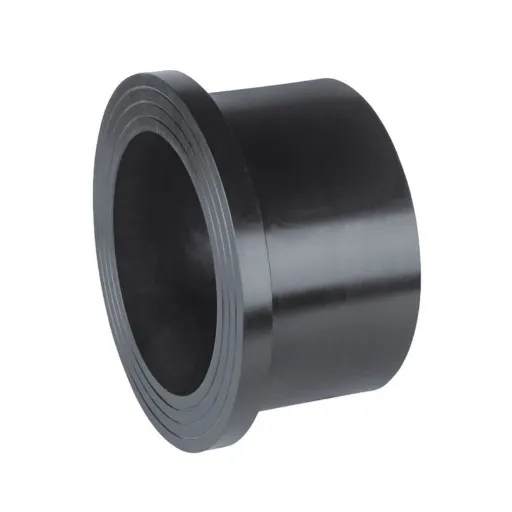
Materials Required for Flange Assembly
For a flange assembly to be successful, the following are the usual materials and tools needed:
| Material/Tool | Description |
|---|---|
| Flanges | The range is from standard types like weld neck, slip-on, or blind flanges to more specialized ones, selected based on pressure rating and material compatibility, depending on the application. |
| Gaskets | A gasket should be chosen that corresponds to the flange type and material composition, for instance, spiral-wound or ring-type joint (RTJ) gaskets for high-pressure applications. |
| Bolts and Nuts | Right grade and size should be assured for secure fastening, often standards like ASTM A193 or A320 for high-pressure environments are followed. |
| Lubricants | Anti-seize compounds or thread lubricants to limit bolt galling and obtain consistent torque during assembling. |
| Torque Wrench | A must for the accurate torque application to avert flange leakage and ensure equal distribution of load on all bolts. |
| Alignment Tools | Tools like an alignment pin or laser guide to make sure the flange alignment is perfect, as it is crucial for not putting stress on the pipeline. |
| Protective Equipment | Gloves, safety glasses, and other PPE to secure workers against injuries during the assembly process. |
These materials together provide a strong, effective, and non-leaking connection. The compliance with the latest industry standards for material choice and assembly practices additionally fortifies the reliability of flange connections in a variety of industrial applications.
Step-by-Step Procedure for Flange Connection
- Inspect the Flanges and Materials
First of all, visually examine the flanges, bolts, gaskets, and all other materials for any signs of damage, distortion, or irregularity. Check and confirm that the materials are in compliance with the industry’s applicable standards and specifications. - Clean the Contact Surfaces
Extensively wash the flange surfaces and the areas where the gaskets will be placed to get rid of all kinds of dirt, grease, and other pollutants. The presence of any kind of residue on the surfaces can lead to the failure of the sealing. - Align the Flanges
Put the flanges in a position that conforms to the correct installation, and then make sure they are perfectly aligned. Wrongly installed flanges may exert undue stress on the pipeline or result in leakage. Take advantage of the right tools, for instance, alignment pins or machines, to get the position precisely right. - Insert the Gasket
Position the gasket that has been selected with care between the faces of the flange, making sure that the placement and the positioning are both even and correct. The type of gasket should be determined by the characteristics of the operating environment, which include pressure, temperature, and the type of fluid. - Insert Bolts and Tighten by Hand
Put the bolts in the holes of the flange and connect them loosely by hand to keep the assembly in place. Make sure the distribution of all the bolts is uniform. - Tighten the Bolts in a Star Pattern
With a calibrated torque wrench, tighten the bolts step by step in a star or crisscross fashion. This method guarantees that the flange surface gets equal pressure all around, which in turn minimizes the chances of leakage or non-uniform gasket compression. - Apply Final Torque
Do a final torque tightening of the bolts to the value specified by the pertinent standards or the manufacturer’s guidelines. To get the precise requirement, use a torque wrench that is designed for precision. - Perform a Leak Test
After putting together the pieces, perform a leak test hydrostatic or pneumatic testing, for instance, to verify the stronghold of the flange connection. Any signs of leakage must be dealt with before the system is put into service. - Inspect and Monitor Post-Installation
Inspection and monitoring of the flange connection should be performed regularly throughout the operation. Retightening of bolts when necessary is among the periodic maintenance practices that help to keep the connection’s reliability in the long run.
By following this systematic method and applying the practices recognized by the industry, the assembling of flange connections will be done with the utmost accuracy and reliability, thereby reducing operational hazards and prolonging the flange connection’s life.
Tips for Ensuring a Secure Flange Connection
①
Always consider the manufacturer’s specifications regarding the torque values, gasket types, and assembly procedures. The use of the right materials and the proper tightening methods result in excellent performance and durability.
②
The flange faces must be cleaned thoroughly to eliminate any dirt, oil, or rust, as these will easily create problems with the gasket sealing. A clean surface is essential for the establishment of a secure and leak-free connection.
③
Choose top-shelf gaskets, bolts, and washers which are made for the special operating conditions. When using poor-quality components, the connection’s reliability will be very much compromised since the components can degrade quickly.
④
Apply a proper bolt tightening pattern, like crisscross or star patterns, to uniformly distribute the load across the flange thereby giving even pressure. The pressure applied during tightening is the same all the way around the gasket which prevents damage to the gasket and ensures perfect load distribution.
⑤
Keep an eye on the flange assembly throughout its use to spot early signs of wear, thermal expansion, or vibrating. Quick action can be taken to rectify issues and so prevent failures.
⑥
Plan and conduct routine inspections to find loose bolts, corrosion, or any other weaknesses. The connection can last longer if bolts are re-tightened to specification and worn-out parts replaced.
⑦
Use ultrasonic measurement tools to check bolt tension or temperature sensors to monitor heat variation and other advanced technology. These insights can help you to plan your maintenance strategy with more precision and effectiveness.
Following these tips, along with constant monitoring of the industry trends, ensure that a strong flange connection is created that reduces risks and supports safe operations that are also efficient.
Tools Needed for Connection Methods
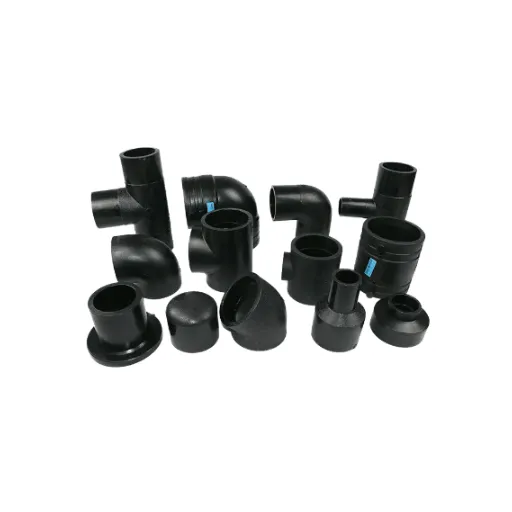
Essential Tools for Flange Assembly
The proper assembly of flanges has a range of specialized tools that guarantee connections that are both secure and accurate. Here are some of the tools that are crucial and commonly used:
Torque Wrenches
These are the most important ones needed to apply the right amount of force to bolts, which in turn ensures that pressure is evenly distributed and prevents the bolt from being tightened or loosened too much/too little leading to either a leak or damage.
Tensioners
Hydraulic or mechanical bolt tensioners assist in getting the exact amount of bolt elongation which in turn increases the overall integrity and reliability of the connection.
Gaskets
The use of high-quality gaskets is a must if one wishes to have an efficient seal between flange faces that can withstand the extreme conditions of high temperature, high pressure, and chemical exposure.
Alignment Pins
The tool is used to help in achieving the correct alignment of the flange faces which is important to avoid uneven stress and sealing that is not done well.
Calibrated Measuring Tools
Devices like feeler gauges, calipers, and ultrasonic measurement instruments give the exact readings needed to check dimensions and find out if there is misalignment or wear occurring already.
Lubricants and Anti-Seize Compounds
These make it possible to tighten bolts without any friction hence no galling occurs and thus the whole assembly/disassembly process is made simpler.
Through the use of these essential tools during flange assembly, maintenance teams will be able to improve the accuracy, safety, and longevity of the piping systems thus cutting down the costly unavailability of production and risking operations.
Tools for Electrofusion Joining
Electrofusion joining does call for tools with precision, so that the connections made in thermoplastic piping systems would be secure and long lasting. The list below shows the main tools that are usually used in the process:
- ⚡ Electrofusion Processor
This instrument controls the melting cycle by passing the required electrical current through the coupling. Data logging capabilities are often included in modern processors to monitor welding parameters and verify compliance with the requirements set by the industry. - 🔪 Pipe Scrapers
For a strong bond, surface preparation is very important. Pipe scrapers take off the oxidized layer from the pipe’s outer surface and provide a clean area for fusion. - 🔒 Alignment Clamps
These devices are used to position and hold the pipes and fittings tightly during the joining process, thus avoiding any shifting that might weaken the weld. - ✂️ Pipe Cutter or Saw
The pipes need to be cut to exact lengths with clean and square edges. The use of specialized cutters or saws provides the required accuracy and smoothness of cutting for the best performance of the joints. - 🧼 Alcohol Wipes or Cleaning Solution
The cleaning that is done properly gets rid of all the impurities like dirt, grease, and moisture from the surfaces of the pipes before fusion, which in turn helps maintain the same quality of joints.
Operators can obtain great reliability of connections in piping systems by using together advanced electrofusion tools and appropriate preparation techniques.
Specialized Tools for Mechanical Joint Adapters
In the case of mechanical joint adapters, the right equipment is vital for effectiveness and precision. Among others, the most critical tool is a torque wrench as it assures the bolts will be tightened in accordance with the required torque specifications that prevent over-tightening or under-tightening. This is a must for the performance and long life of the adapter in the piping system.
Moreover, a pipe chamfering tool is a must-have. It not only ensures the edges of the pipe are properly beveled but also that the pipe is correctly inserted into the mechanical adapter. Additionally, this step significantly reduces the chances of assembly-caused damages and at the same time, improves the sealing capability of the joint, thus, making a safe connection free of leaks.
Last but not least, applying a gasket lubricant is strongly suggested as it makes installation easier. The lubricant during the assembly reduces friction, allowing the gasket to fit tightly without suffocating its integrity. With the right tools and preparation, I advocate that literally anyone is able to pull-off a durable mechanical joint adapter installation compliant with industry standards.
Best Practices for Long-Lasting Connections
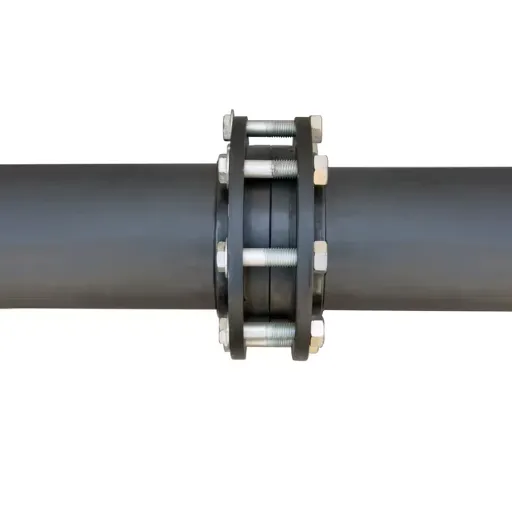
Maintenance Tips for HDPE and Steel Connections
Maintenance and inspection are key factors in the retention of HDPE and steel connections for a long time. The very first step is to do daily visual inspections looking for any signs of wear, corrosion, or deformation on the steel parts, and checking for cracks or abrasions on the HDPE components. With the cleaning of the connections using non-abrasive materials, the accumulation of debris, which could impair joint integrity, is prevented.
Leak detection in the connection area is turning out to be the most important habit. Leak early detection can stop the upgrade of small problems into big and costly repairs. Stress checking around the fittings and joints is also of utmost importance for HDPE pipes as these stress lines could become a weak spot in the future.
In addition, the use of protective coatings on steel parts to prevent rust and corrosion is especially significant in areas of high humidity or near the sea. For the case of HDPE, the UV radiation exposure should be completely eliminated either by using UV-stabilized materials or providing light shields. The adoption of these precautionary measures will not only cause the connections to last longer but will also lead to a reduction in the frequency and costs of repairs, thus contributing to the efficiency of operations.
Common Mistakes to Avoid When Joining Pipes
⚠️
Improper Surface Preparation
The wrong treatment of the pipe surfaces before the pipes are connected is one of the mistakes that could happen at the time of joining the pipes. If dirt, grease, and debris are not properly removed, they can become the reason of leaks or failures in the joint over time. Steel and HDPE are among the materials that need a thorough preparation which may involve cleaning, sanding or priming with the right products. Neglecting the cleaning of surface contaminants can significantly shorten the life of the pipeline as well as reducing its efficiency.
⚠️
Using Incompatible Materials
Another mistake that frequently occurs is the use of different kinds of materials or fittings that are not designed for the pipe being joined. For instance, if PVC is coupled with metal fittings and no proper adaptors are used, it can lead to stress fractures, leaks, and warping because of thermal expansion differences and material incompatibility. It is of utmost importance to do the research and then select the components that are compatible with your piping materials, pressure ratings, and environmental conditions so that long-term reliability can be achieved.
⚠️
Improper Installation Techniques
Finally, improper installation techniques can lead to vulnerabilities in the piping system, such as the over-tightening of fittings or the omission of critical sealing compounds like thread sealant or Teflon tape. Excessive tightening may fracture certain materials like PVC, while insufficient sealing may allow the joint to leak under pressure. Careful adherence to the manufacturer’s instructions and recommendations, including torque specifications and suggested sealing products, will help avert these problems and facilitate the establishment of a strong connection. The avoidance of these mistakes guarantees the development of a less costly and more durable piping system along with reduction in the risk of very expensive repairs and downtime.
References
- California State University
Best Practices – Hydronic Infrastructure
This document outlines best practices for connecting HDPE to steel pipes, including the use of flanges and mechanical joint adapters. - Texas A&M University Facilities
Design Standard – Underground Piping Installations
Provides guidelines for underground piping installations, including HDPE connections to anchored joints and flanges. - Tri-County Technical College
SCDOT Pipe Installation and Acceptance
Discusses field-fabricated joints and methods for connecting HDPE pipes, including split coupler bands. - City of Charlotte Water Design Manual
High Density Polyethylene HDPE Details
Details the use of stainless steel internal stiffeners when connecting HDPE pipes to non-HDPE pipes.
Frequently Asked Questions (FAQ)
Q: What are the common methods for connecting HDPE pipe to steel pipe?
A: Connecting HDPE pipes to steel pipes can be done through various methods, such as flange adapters, mechanical fittings, and compression fittings. Each of these methods has its unique benefits according to the specific application and the materials of the pipes involved.
Q: How do I use a flange adapter to connect HDPE pipe to a steel pipe?
A: The process for connecting HDPE pipes to steel ones through flange adapters starts with making the pipe ends clean and clear of any dirt. Following that, the flange adapter gets mounted on the steel pipe and is held firmly with bolts. After that, either socket fusion or butt welding method is used to connect the HDPE pipe to the flange adapter which results in a strong and leak-proof joint.
Q: What is the importance of joint quality in HDPE pipe systems?
A: The quality of the joint is of utmost significance in HDPE pipe systems as it affects the performance and dependability of the system directly. A strong and leak-proof joint guarantees that there are no leaks at all which can otherwise cause a lot of expenses on repairs and environmental pollution. It is important to use the right methods for joining, like heat fusion techniques or mechanical fittings, in order to get the quality joints.
Q: Can compression fittings be used to connect HDPE pipe to a metal pipe?
A: Definitely, compression fittings can be used for the task of connecting HDPE pipe to metal pipe. This procedure is crisp and clear and makes a trustworthy connection without resorting to welding or heat fusion at all. It is paramount to double-check if the fitting is suitable for both the HDPE and metal pipe sizes in order to make the joint strong and reliable.
Q: What are the advantages of using electrofusion connections for HDPE pipes?
A: Electrofusion connections are among the least demanding ways to join HDPE pipes with various components including steel pipes. The process consists of heating the surfaces which are to be joined by means of a fusion welding machine, thus producing a solid joint that is highly dependable and suitable for many different applications.
Q: How does butt welding work for HDPE pipe joining?
A: In the butt welding process, a welding machine is used on the pipe ends to heat them to the melting point of plastic. The heated ends are then joined together to form a strong and leak-proof joint which gets stronger as the material cools. This method is used for big pipe sizes and ensures great joint integrity.
Q: What factors should I consider when choosing a joining method for HDPE and steel pipes?
A: Pipe size, the location where the pipes are going to be installed, and the application requirements are some of the factors to think about when deciding on a joining method for HDPE and steel pipes. Also, the chosen method must be compatible with both materials to guarantee a safe and leak-proof connection.
Q: How can I ensure the reliability of the HDPE piping system when connecting to steel pipes?
A: Using the correct joining technique such as flange connections or heat fusion methods is the primary step to taking to ensure the reliability of the HDPE piping system while connecting to steel pipes. In addition, using proper installation methods, quality materials, and adhering to manufacturer guidelines also play a major role in the overall effectiveness and durability of the system.
Ready to Start Your Piping Project?
With the right knowledge, tools, and techniques, connecting HDPE to steel pipes can be accomplished efficiently and reliably. Follow the best practices outlined in this guide to ensure long-lasting, leak-free connections that will serve your project for decades to come.



